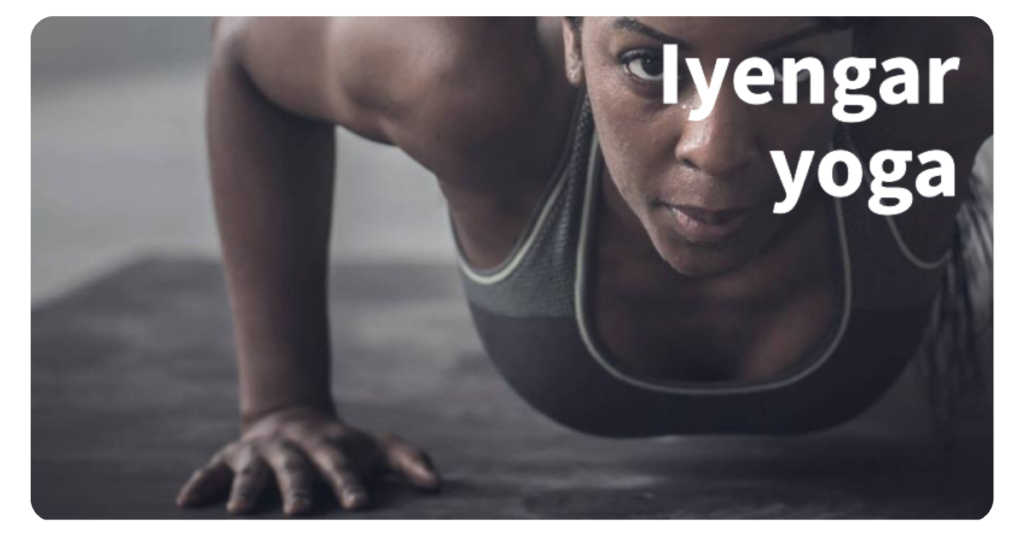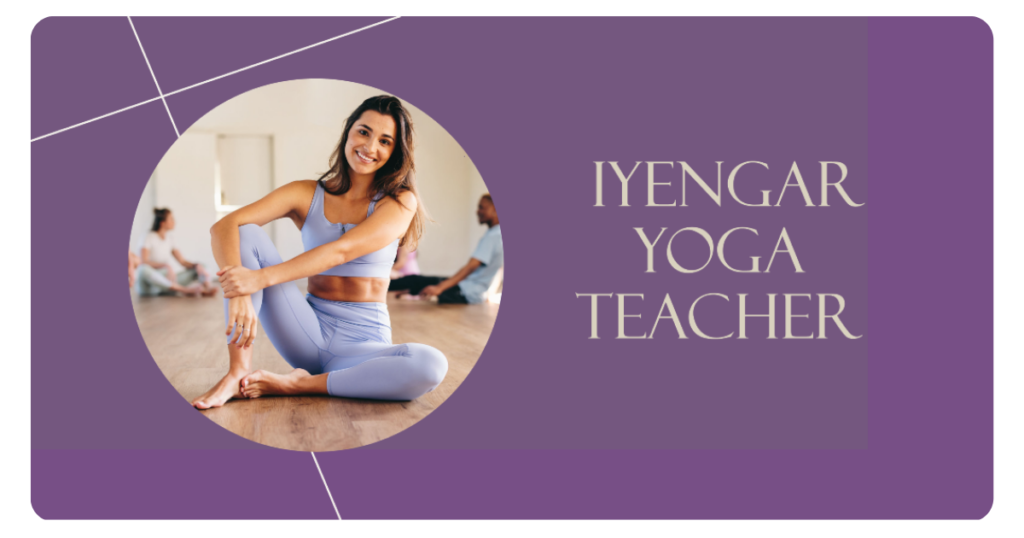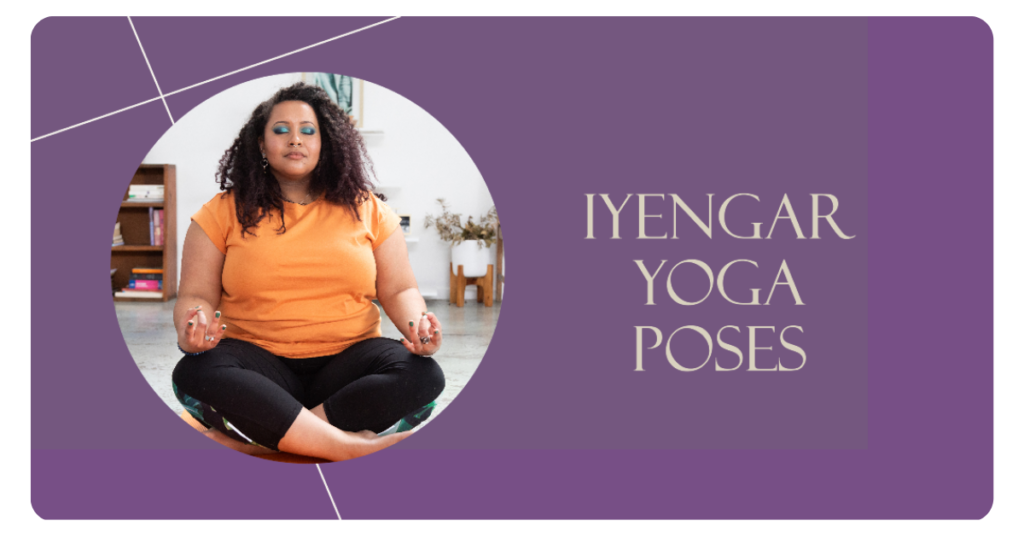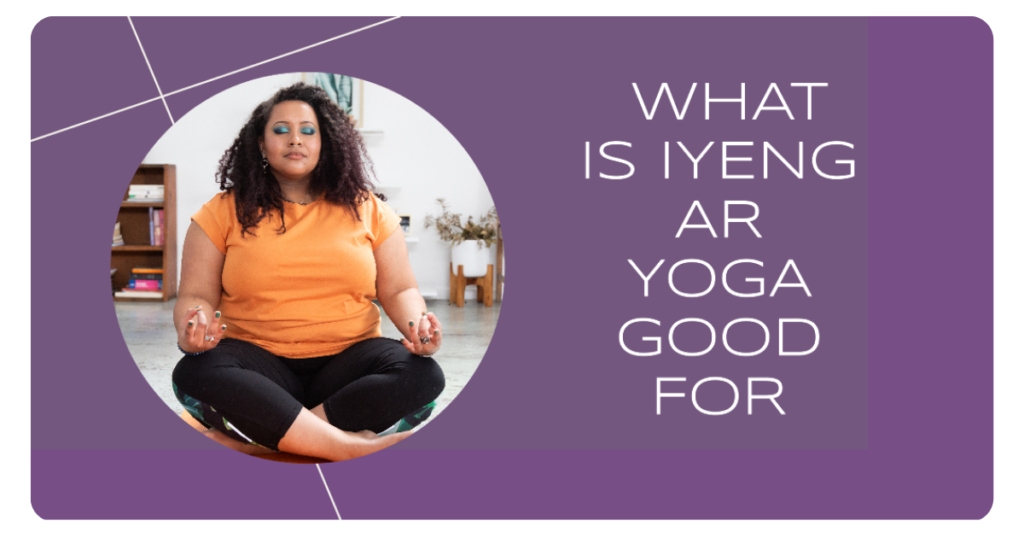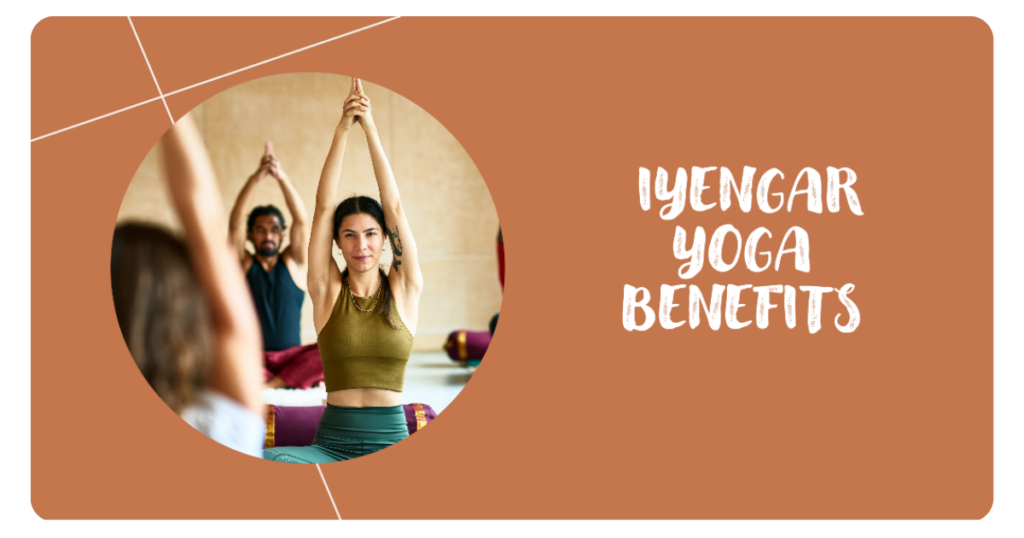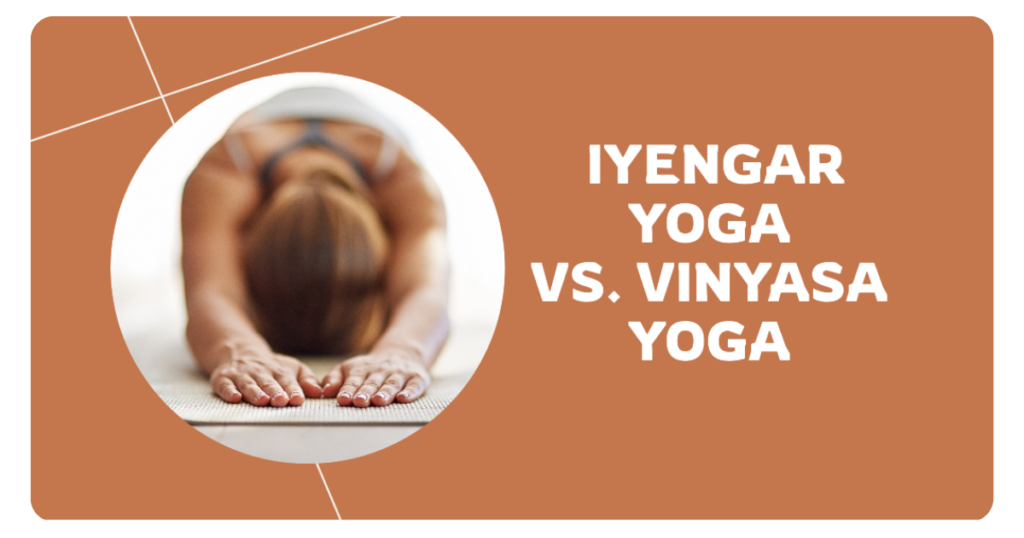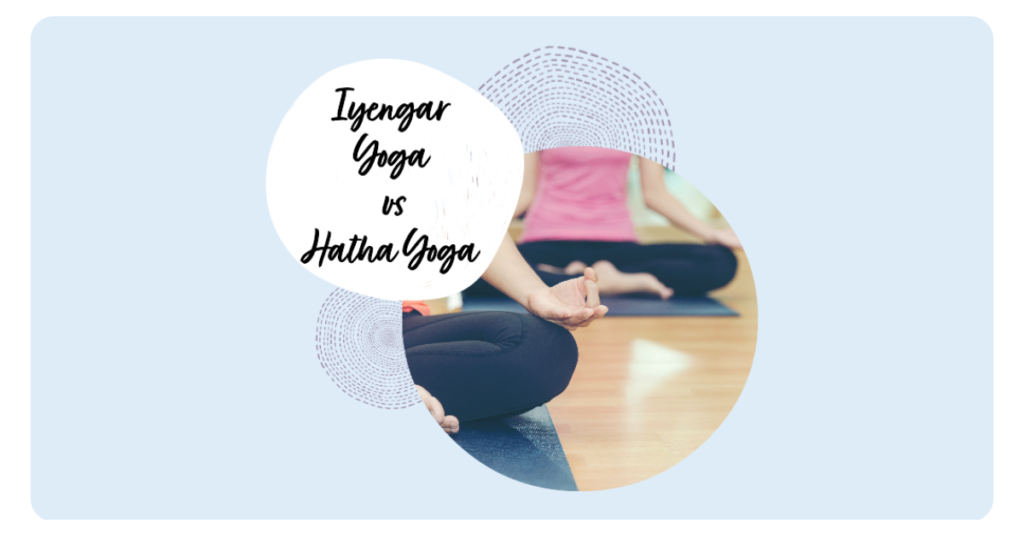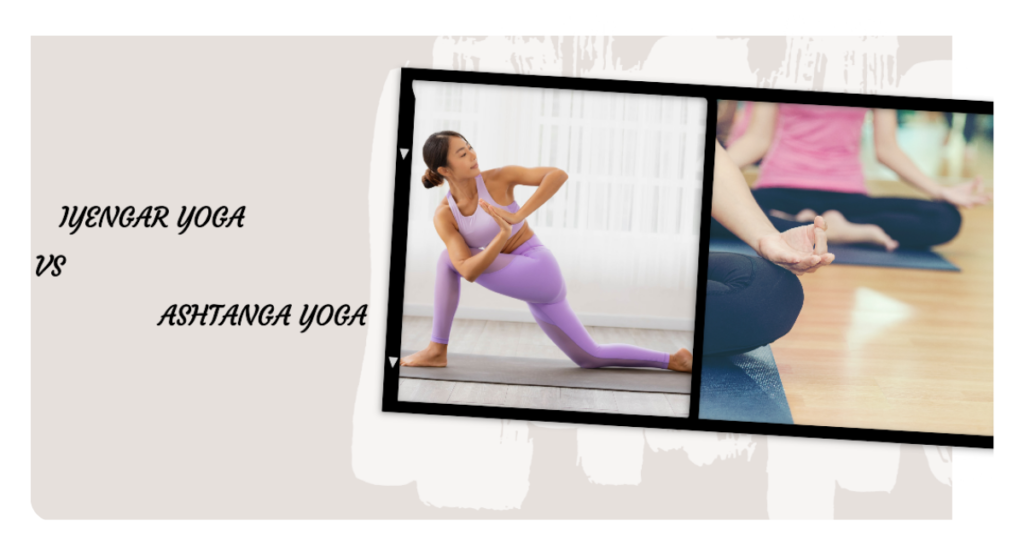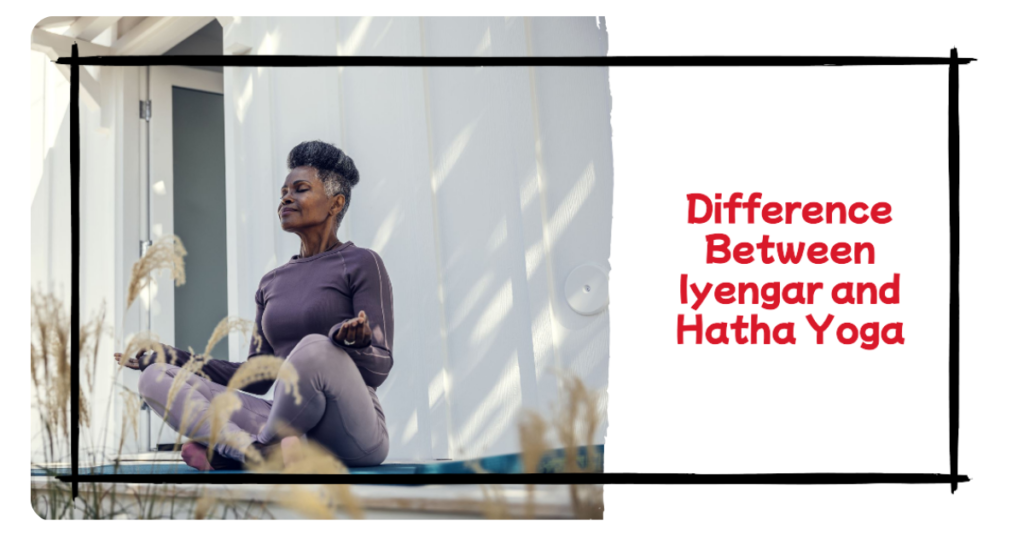
The ancient practice of yoga has taken many forms over the centuries, with various styles and disciplines emerging to meet the needs of practitioners around the world. Two of the most well-known and widely practiced forms of yoga are Iyengar and Hatha. While they share some fundamental principles and practices, there are distinct differences between these two approaches that are important to understand for those seeking to embark on their yoga journey.
Yoga, which means “union” in Sanskrit, originated in ancient India and has been practiced for thousands of years. Its roots can be traced back to the Yoga Sutras of Patanjali, a collection of aphorisms that outline the eight limbs of yoga, including ethical principles (yamas and niyamas), physical postures (asanas), breathing exercises (pranayama), meditation, and enlightenment. “what is the difference between iyengar and hatha yoga”
Hatha Yoga, which focuses on the physical practice of asanas (postures) and pranayama (breathing techniques), emerged as a system around the 11th century CE. It is considered a preparatory stage for higher meditation practices and is designed to create a strong, flexible body and a calm, focused mind.
On the other hand, Iyengar Yoga, named after its founder B.K.S. Iyengar (1918-2014), is a specific style of Hatha Yoga that emphasizes precise body alignment, the use of props (such as blocks, straps, and blankets), and a deep understanding of anatomical principles. It is known for its attention to detail and its therapeutic applications.
The goal of this comprehensive guide is to provide an in-depth exploration of the key distinctions between Iyengar and Hatha Yoga. We’ll delve into the history, philosophy, and core tenets that shape each style, as well as examine the specific practices, techniques, and potential benefits associated with each approach. By the end, you’ll have a clear understanding of what sets Iyengar and Hatha Yoga apart, enabling you to make an informed decision about which style aligns best with your personal goals and preferences.
History and Origins Hatha and Iyengar Yoga
Hatha Yoga
While the term “Hatha” is mentioned in ancient texts like the Bhagavad Gita, the system of Hatha Yoga as we know it today is believed to have emerged around the 11th century CE. It is primarily based on the teachings of two influential yogis:
Hatha Yoga aimed to create a strong, healthy body and a calm, focused mind as a foundation for spiritual growth and enlightenment.
Iyengar Yoga
Iyengar Yoga was developed and popularized by B.K.S. Iyengar (1918-2014), a renowned yoga master and author from India. Iyengar’s journey with yoga began at the age of 16 when he was introduced to the practice to help improve his health after battling several illnesses as a child.
Through dedicated study and practice, Iyengar developed a unique approach to yoga that emphasized precise body alignment, the use of props (such as blocks, straps, and blankets), and a deep understanding of anatomical principles. He believed that proper alignment and the use of props could make yoga accessible to people of all ages and physical abilities.
Iyengar’s teachings quickly gained popularity, and he went on to establish numerous yoga institutes around the world, training thousands of teachers in his methodology. His influential books, including “Light on Yoga” and “Light on Pranayama,” are considered essential texts in the yoga community.
Core Principles and Philosophy Hatha and Iyengar Yoga
Hatha Yoga
Hatha Yoga is based on the principle of balancing two opposing forces within the body: the “ha” (sun) and the “tha” (moon). This balance is achieved through the practice of asanas (postures), pranayama (breathing exercises), and various purification techniques.
The philosophy of Hatha Yoga emphasizes the integration of body, mind, and spirit. It teaches that by cultivating physical health and mental clarity through the practice of yoga, one can achieve a state of inner peace and spiritual awakening.
Iyengar Yoga
While Iyengar Yoga shares the fundamental principles of Hatha Yoga, it places a strong emphasis on precision and alignment in the execution of asanas (postures). B.K.S. Iyengar believed that proper body alignment was essential for achieving the full benefits of each posture and preventing injuries.
The core philosophy of Iyengar Yoga is based on the idea that the practice should be tailored to the individual’s needs and abilities. This is where the use of props (such as blocks, straps, and blankets) becomes crucial, as they allow practitioners to achieve the correct alignment and benefit from the postures, regardless of their flexibility or physical limitations.
Iyengar Yoga also emphasizes the importance of concentration, breath control, and the development of inner awareness. By focusing on the body’s alignment and the subtleties of each posture, practitioners are encouraged to cultivate a heightened sense of mindfulness and self-awareness.
Understanding Hatha Yoga
Hatha Yoga is a broad term that encompasses a wide range of physical yoga practices focused on asanas (postures) and pranayama (breathing exercises). While there are many different schools and styles of Hatha Yoga, they generally share a common foundation and set of principles.
Core Principles and Philosophy
As mentioned earlier, Hatha Yoga is based on the principle of balancing the opposing forces of “ha” (sun) and “tha” (moon), representing the positive and negative, masculine and feminine energies within the body. This balance is achieved through the practice of asanas, pranayama, and various purification techniques.
The philosophy of Hatha Yoga emphasizes the integration of body, mind, and spirit. It teaches that by cultivating physical health and mental clarity through the practice of yoga, one can achieve a state of inner peace and spiritual awakening.
Common Practices
Asanas (Postures)
The physical practice of Hatha Yoga revolves around the execution of various asanas or postures. These postures range from gentle, accessible poses to more advanced and challenging ones, catering to practitioners of all levels.
Some common asanas found in Hatha Yoga include:
- Standing poses (e.g., Mountain Pose, Forward Fold, Warrior Poses)
- Seated poses (e.g., Bound Angle Pose, Head-to-Knee Forward Bend)
- Backbends (e.g., Camel Pose, Upward-Facing Dog)
- Inversions (e.g., Shoulderstand, Headstand)
- Twists (e.g., Revolved Chair Pose, Revolved Crescent Lunge)
Pranayama (Breathing Exercises)
Pranayama, or the control and regulation of the breath, is an integral part of Hatha Yoga practice. Different breathing techniques are used to calm the mind, increase energy levels, and promote overall well-being.
Some common pranayama practices include:
- Nadi Shodhana (Alternate Nostril Breathing)
- Kapalabhati (Skull Shining Breath)
- Anuloma Viloma (Alternate Nostril Breathing with Retention)
- Bhramari (Humming Bee Breath)
Meditation and Relaxation
Many Hatha Yoga classes incorporate meditation and relaxation techniques to help practitioners cultivate inner peace, reduce stress, and achieve a state of deep relaxation.
These practices may include:
- Guided meditations
- Yoga Nidra (yogic sleep)
- Visualization exercises
- Chanting (mantras or seed sounds)
Variations and Schools
While the core principles of Hatha Yoga remain consistent, there are various schools and styles that have emerged over time, each with its own unique approach and emphasis. Some popular variations of Hatha Yoga include:
- Sivananda Yoga: A traditional style that emphasizes proper breathing, relaxation, and a balanced practice of asanas, pranayama, and meditation.
- Ashtanga Yoga: A dynamic and physically demanding style that follows a set sequence of postures synchronized with specific breathing patterns.
- Vinyasa Yoga: A flowing style that links movement with breath, creating a dynamic and fluid practice.
- Kundalini Yoga: A practice that combines physical postures, breathwork, meditation, and chanting to awaken and channel energy within the body.
These are just a few examples of the many variations of Hatha Yoga, each offering its own unique perspective and approach to the practice.
The Iyengar Yoga Tradition
Iyengar Yoga, founded by the renowned yogi B.K.S. Iyengar, is a specific style of Hatha Yoga that emphasizes precision, alignment, and the use of props to aid in achieving proper form and posture.
Background on B.K.S. Iyengar
B.K.S. Iyengar (1918-2014) was a pioneering figure in the world of yoga, renowned for his innovative approach and contributions to the practice. Born in Bellur, India, Iyengar was introduced to yoga at a young age as a means to improve his health after suffering from various illnesses.
Through dedicated study and practice, Iyengar developed a deep understanding of the physical, psychological, and spiritual aspects of yoga. He spent years meticulously refining his techniques and developing a unique teaching methodology that focused on precise body alignment, the use of props, and a comprehensive understanding of anatomical principles.
Iyengar’s teachings quickly gained popularity, and he went on to establish numerous yoga institutes around the world, training thousands of teachers in his methodology. His influential books, including “Light on Yoga” and “Light on Pranayama,” are considered essential texts in the yoga community.
Key Tenets and Focus Areas
Alignment and Precision
One of the defining characteristics of Iyengar Yoga is its emphasis on proper body alignment and precision in the execution of asanas (postures). Iyengar believed that correct alignment was essential for achieving the full benefits of each posture and preventing injuries.
In Iyengar Yoga, students are taught to pay close attention to the subtle movements and adjustments required to maintain proper alignment in each pose. This attention to detail helps cultivate body awareness and mindfulness, allowing practitioners to experience the postures fully and reap their benefits.
Use of Props
Another key aspect of Iyengar Yoga is the use of props, such as blocks, straps, blankets, and chairs. These props are used to assist practitioners in achieving proper alignment and to modify poses based on individual needs and abilities.
The use of props allows students of all levels to practice safely and effectively, reducing the risk of injury and making the practice more accessible. Props can also help deepen the experience of a posture by providing support and enabling practitioners to hold poses for longer periods.
Sequencing and Progression
Iyengar Yoga classes often follow a specific sequence of postures designed to build strength, flexibility, and balance in a systematic and progressive manner. Each pose is held for an extended period, allowing practitioners to fully experience and understand the nuances of the posture.
This methodical approach to sequencing and progression helps students develop a solid foundation and gradually advance their practice in a safe and controlled manner.
Emphasis on Pranayama and Philosophy
While Iyengar Yoga places a strong emphasis on the physical practice of asanas, it also incorporates pranayama (breathing exercises) and philosophical teachings from ancient yogic texts.
Pranayama practices are integrated into the Iyengar Yoga approach to help cultivate breath awareness and control, which are believed to be essential for achieving a calm and focused mind.
Additionally, Iyengar drew inspiration from the Yoga Sutras of Patanjali and other classical yoga texts, incorporating philosophical concepts and ethical principles into his teachings.
Use of Props and Modifications
As mentioned earlier, the use of props is a distinguishing feature of Iyengar Yoga. Props such as blocks, straps, blankets, and chairs are used to assist practitioners in achieving proper alignment, modify postures based on individual needs, and make the practice more accessible.
Here are some examples of how props are commonly used in Iyengar Yoga:
Blocks
- Placed under the hands in standing poses to bring the floor closer and improve alignment
- Used to support the back, head, or other body parts in seated or reclined poses
- Placed between the thighs or under the pelvis to maintain proper alignment and prevent strain
Straps
- Wrapped around the feet or legs to assist in forward bends and hamstring stretches
- Used to support and deepen backbends by looping the strap around the upper back
- Employed in various arm and shoulder poses to improve range of motion and alignment
Blankets
- Folded and placed under the knees, hips, or back to provide support and alignment in seated and reclined poses
- Used to cushion sensitive areas like the knees or elbows during certain poses
- Rolled up and placed under the spine in backbends to maintain proper curvature
Chairs
- Utilized as a prop for seated and standing poses, providing support and stability
- Can be used to modify inversions like Shoulderstand or Headstand for beginners or those with limitations
- Helpful for individuals with mobility issues or injuries to practice safely and effectively
By incorporating props into the practice, Iyengar Yoga allows practitioners of all levels and abilities to experience the benefits of each posture without compromising alignment or risking injury. The props also encourage a deeper understanding of proper form and body awareness, enhancing the overall yoga experience.
Comparing Iyengar and Hatha Yoga Practices
While Iyengar Yoga is considered a form of Hatha Yoga, there are distinct differences in their practices and approaches.
Differences in Asana Execution and Emphasis
One of the primary distinctions between Iyengar and Hatha Yoga lies in the execution and emphasis on asanas (postures).
In Hatha Yoga, the focus is often on exploring a wide range of postures, with less emphasis on precise alignment and form. The execution of asanas may vary depending on the specific school or teacher.
Iyengar Yoga, on the other hand, places a strong emphasis on proper body alignment and the fine details of each posture. Students are taught to pay close attention to the subtle movements and adjustments required to maintain correct form, often holding poses for an extended period to deepen the experience.
Pacing and Sequence Structure
The pacing and sequence structure of Iyengar and Hatha Yoga classes can also differ significantly.
In Hatha Yoga, classes may follow a more fluid and dynamic sequence, with postures flowing from one to the next in a continuous, breath-synchronized movement (vinyasa). The pacing can vary depending on the style and teacher’s approach.
Iyengar Yoga classes, however, typically follow a more methodical and structured sequence. Each posture is held for an extended period, allowing students to fully experience and understand the nuances of the pose. The progression from one posture to the next is often more deliberate and controlled.
Role of the Instructor
The role of the instructor in Iyengar and Hatha Yoga classes can also differ significantly.
In Iyengar Yoga, the instructor plays a crucial role in guiding students through proper alignment and the use of props. They often provide hands-on adjustments and detailed verbal cues to ensure correct form and prevent injury.
In Hatha Yoga classes, the instructor’s role may vary depending on the specific school or style. Some classes may involve more hands-on adjustments, while others may rely more on verbal cues and demonstrations.
Physical and Mental Benefits Hatha and Iyengar Yoga
Both Iyengar and Hatha Yoga offer a range of physical and mental benefits, although their specific emphases may lead to slightly different outcomes.
Potential Benefits of Hatha Yoga
The regular practice of Hatha Yoga can provide the following benefits:
- Increased strength and flexibility
- Improved posture and balance
- Reduced stress and anxiety
- Better sleep quality
- Enhanced respiratory function
- Increased body awareness and mindfulness
Advantages of Iyengar Yoga’s Focus on Form and Props
While Iyengar Yoga shares many of the general benefits of Hatha Yoga, its focus on precise alignment and the use of props can offer additional advantages:
- Reduced risk of injury due to proper form and alignment
- Increased accessibility for individuals with physical limitations or injuries
- Deeper understanding of anatomical principles and body awareness
- More therapeutic applications for specific conditions or ailments
- Improved balance and stability through the use of props
Choosing the Right Style for You
When it comes to deciding between Iyengar and Hatha Yoga, there is no one-size-fits-all answer. The choice ultimately depends on your personal goals, preferences, and physical abilities.
Factors to Consider
Here are some factors to consider when selecting a yoga style:
- Experience level: If you’re a beginner, Iyengar Yoga’s emphasis on alignment and use of props may provide a gentler introduction to the practice. Experienced practitioners may enjoy the challenge of more dynamic Hatha styles.
- Physical limitations or injuries: Iyengar Yoga’s use of props and focus on alignment can make it more accessible for those with physical limitations or recovering from injuries.
- Preference for structure or fluidity: If you prefer a more structured and methodical approach, Iyengar Yoga’s sequencing may appeal to you. If you enjoy a more fluid and dynamic practice, some styles of Hatha Yoga may be a better fit.
- Emphasis on alignment or exploration: If precise alignment and attention to detail are important to you, Iyengar Yoga may be the way to go. If you prefer a practice that allows for more exploration and variation, Hatha Yoga styles like Vinyasa or Ashtanga might be more suitable.
Suitability for Beginners vs. Experienced Practitioners
Both Iyengar and Hatha Yoga can be suitable for beginners and experienced practitioners alike, depending on the specific style and teacher’s approach.
For beginners, Iyengar Yoga’s emphasis on alignment and use of props can provide a solid foundation and a gentle introduction to the practice. The structured nature of Iyengar classes can also help beginners develop a deeper understanding of the postures and principles of yoga.
Experienced practitioners may find the preciseness and attention to detail in Iyengar Yoga challenging and rewarding, allowing them to refine their practice and deepen their understanding of alignment and anatomical principles.
In the realm of Hatha Yoga, some styles like Sivananda or Integral Yoga may be more suitable for beginners, as they often offer a gentler and more accessible approach. More dynamic styles like Ashtanga or Vinyasa may appeal more to experienced practitioners seeking a physically demanding practice.
Ultimately, it’s essential to sample different styles and teachers to find the approach that resonates best with your individual needs and preferences.
Finding Quality Iyengar and Hatha Classes
Regardless of whether you choose to pursue Iyengar or Hatha Yoga, finding a qualified and experienced instructor is crucial for ensuring a safe and effective practice.
What to Look for in a Reputable Yoga Studio
When searching for a yoga studio, consider the following factors:
- Experienced and certified instructors
- Clean and well-maintained facilities
- Adherence to safety protocols and COVID-19 guidelines
- Positive reviews and testimonials from students
- Welcoming and inclusive environment
Evaluating Instructor Credentials and Experience
When selecting an Iyengar or Hatha Yoga instructor, it’s important to evaluate their credentials and experience:
For Iyengar Yoga:
- Look for instructors certified by the Iyengar Yoga National Association of the United States (IYNAUS) or similar accredited organizations.
- Inquire about their training and years of experience teaching Iyengar Yoga.
For Hatha Yoga:
- Reputable certifications from recognized yoga schools or organizations (e.g., Yoga Alliance, Sivananda Yoga Vedanta Centres, etc.).
- Years of experience teaching the specific style of Hatha Yoga (e.g., Vinyasa, Ashtanga, etc.).
Sampling Different Classes
To find the best fit, consider sampling different classes and instructors before committing to a specific studio or style. Many studios offer introductory offers or free trial classes, allowing you to experience the teaching style and environment firsthand.
Don’t hesitate to try out multiple options until you find a class and instructor that resonates with your preferences and goals.
Additional Resources
Online resources and directories can also be helpful in your search for quality Iyengar and Hatha Yoga classes:
- IYNAUS Studio Directory for Iyengar Yoga studios
- Yoga Alliance Directory for various yoga styles
- Online reviews and recommendations from trusted sources
By taking the time to research and find a reputable studio and qualified instructor, you’ll be better positioned to embark on a rewarding and transformative yoga journey, whether you choose the path of Iyengar or Hatha Yoga.
Conclusion
As we’ve explored throughout this comprehensive guide, Iyengar and Hatha Yoga share a common foundation rooted in the ancient traditions of yoga, yet they offer distinct approaches and experiences for practitioners.
Hatha Yoga, with its diverse range of styles and schools, emphasizes the integration of physical postures (asanas), breathing techniques (pranayama), and meditation practices. It provides a broad canvas for exploration, allowing practitioners to find the variation that resonates most with their preferences and goals.
On the other hand, Iyengar Yoga stands out for its meticulous attention to detail, precise body alignment, and innovative use of props. This approach, developed by the legendary B.K.S. Iyengar, offers a more structured and methodical path, catering to those seeking a deeper understanding of anatomical principles and a therapeutic, alignment-focused practice.
While the core benefits of increased strength, flexibility, stress relief, and mindfulness can be achieved through both Iyengar and Hatha Yoga, the specific emphasis and techniques employed in each style may lead to slightly different outcomes and experiences.
Ultimately, the choice between Iyengar and Hatha Yoga comes down to your individual needs, preferences, and goals. If you value precision, attention to detail, and a structured approach, Iyengar Yoga may be the ideal fit. If you prefer a more explorative and diverse range of practices, the various styles of Hatha Yoga might better align with your desires.
However, the beauty of the yoga tradition lies in its adaptability and inclusiveness. As you embark on your yoga journey, don’t be afraid to sample different styles and teachers until you find the approach that resonates most profoundly with your mind, body, and spirit.
Remember, the true essence of yoga extends beyond the physical practice itself. It is a holistic path to self-discovery, inner peace, and personal growth. Embrace the journey, remain open-minded, and allow the transformative power of yoga to guide you towards greater wellbeing and fulfillment.
So, whether you choose to embrace the precision of Iyengar Yoga or the diversity of Hatha Yoga, approach your practice with dedication, patience, and an open heart. The rewards of this ancient tradition are boundless, and the path to self-realization awaits those who commit to their yoga journey with unwavering determination. “Ashtanga vs Vinyasa vs Hatha Yoga: Understanding the Key Differences”
